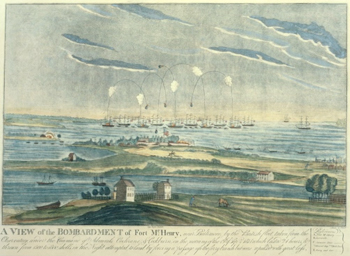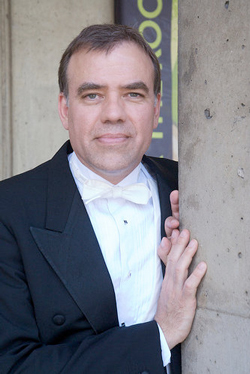by Daniel Hathaway

Though Quire Cleveland pointed up some of the history of The Star-Spangled Banner in its “American Choral Gems” programs last April (treating the audiences to all four verses of Key’s expressive poetry), hardly anyone gives the anthem a second thought after standing for its ritual performance at the beginning of sporting events. As Akron Symphony music director Christopher Wilkins admitted in a telephone conversation, “it had never occurred to me to get all that excited about The Star-Spangled Banner other than just having regretted some of its militaristic words and the fact that the tune was written by an Englishman, anyway.”
That all changed when Wilkins talked with composer Michael Gandolfi, who was involved in writing his Chesapeake, Summer of 1814. “He started going on about the history surrounding the song, and I was mesmerized. I asked him to send me the score when he was finished. It was performed a year ago by the Reno Symphony in Nevada, and it was a community sensation.”
The Reno production included video. “That imagery gave some idea of the historical narrative behind the Anthem. And the history itself is remarkable,” Wilkins said. “The War of 1812 is almost forgotten but it was very important. We barely survived it as a nation. Most people don’t know that Maine was almost completely occupied. The U.S. attacked Toronto and burned Fort York to the ground and the British retaliated by burning Washington, D.C.”
“The fact that Francis Scott Key watched the siege of Fort McHenry onboard a British frigate is somehow vaguely in most people’s minds, but the details go missing. I suddenly got extremely interested in the whole thing,” Wilkins said.
Wilkins has woven Gandolfi’s piece into a program with a through-going narrative in the tradition of Walter Lord’s The Dawn’s Early Light and A Night to Remember. The evening begins with Dudley Buck’s nineteenth-century Festival Overture on The American National Air, proceeds to Beethoven’s overture to Fidelio and eighth symphony, Charles Ives’s Variations on ‘America’ arranged for orchestra by William Shuman, and ends with the Gandolfi.
Beethoven? Wilkins points out that 1814 was a pivotal year for the composer, the end of his “middle” period, and the year he revived Fidelio, an event really made possible after Napoleon’s defeat at Waterloo. “Beethoven’s interest in equal rights and political rights resonates with all that Beethoven had previously thought of Napoleon, and the Emperor’s abdication had a great impact on the War of 1812, suddenly freeing up most of the British navy to fight against the U.S.”
The Gandolfi will form the grand finale to the evening. “We have planned it as a community event involving a community chorus and children from Miller South. It ends with all four verses of Keys’s poem, each with expanding numbers, ending with an audience sing-along.”
Published on ClevelandClassical.com September 9, 2014.
Click here for a printable copy of this article.




